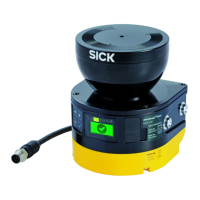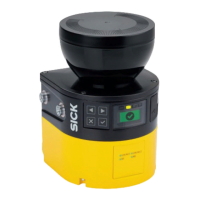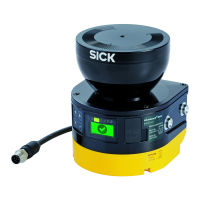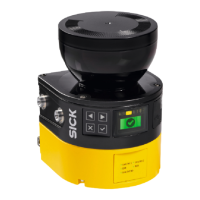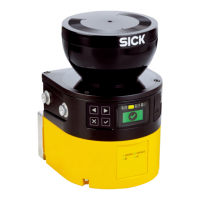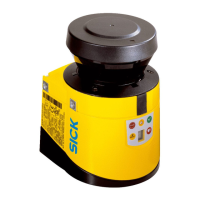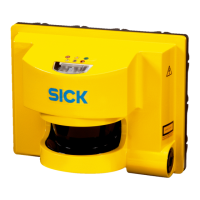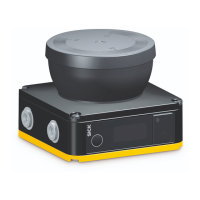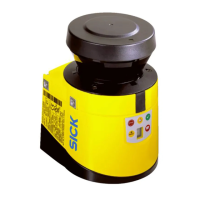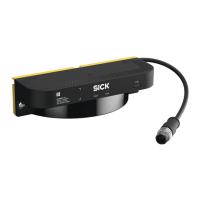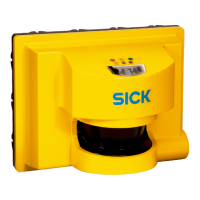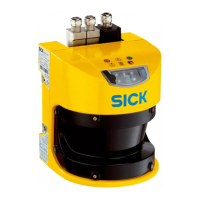DANGER
H
azard due to lack of effectiveness of the protective device
Persons and parts of the body to be protected may not be recognized in case of
non-observance.
b
Use a contour from the environment as a reference to protect the protective device
from inadvertent adjustment or tampering.
Configuring the reference contour field during vertical operation
N
ote the following points in particular when configuring the reference contour field:
•
In many cases, it makes sense to use lateral vertical passage boundaries (e.g.
door frames) and the floor as a reference.
•
The reference contour field has a tolerance band, which can be set, around
the contour. If the safety laser scanner does not detect the contour within the
tolerance band, all safety outputs switch to the OFF state.
°
For high availability, setting both the positive tolerance band (far) and the
negative tolerance band (near) to the TZ value is recommended. (TZ = toler‐
ance range of the safety laser scanner, see "Data sheet", page 142.)
°
Make sure that the tolerance band is not too wide. The reference contour
field must detect a change in the position or alignment of the safety laser
scanner before a dangerous gap is created between the protective field and
mechanical limit.
•
The following requirements apply to the protective field with respect to the refer‐
ence contour field:
°
Access protection:
•
If the reference contour represents the edge of the protected opening,
the distance between the edge of the protected opening and the protec‐
tive field must be no more than 100 mm wide. A distance equal to the
TZ value is recommended for high availability and sufficient protection.
(TZ = tolerance range of the safety laser scanner, see "Data sheet",
page 142.)
•
If the reference contour does not represent the edge of the protected
opening, the protective field must be larger than the protected opening.
The required overrun (o) is calculated using the same formula as for
hazardous point protection.
°
Hazardous point protection: the protective field must be larger than the pro‐
tected opening. The required overrun (o) is calculated using the following
formula:
o ≥ (2 × TZ) – d
where:
•
o = o
verrun of the protective field over the opening
•
TZ = tolerance range of the safety laser scanner, see "Data sheet",
page 142
•
d = set resolution
•
You can define a number of contours in the reference contour field and so monitor
various areas in the environment.
PROJECT PLANNING 5
8025870/2020-09-04 | SICK O P E R A T I N G I N S T R U C T I O N S | microScan3 Core I/O
31
Subject to change without notice
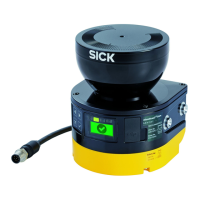
